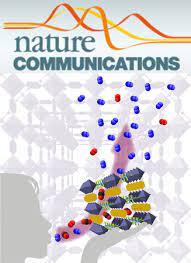Nat Commun. 2023 Jul 5;14(1):3970. doi: 10.1038/s41467-023-39606-y.
RAS-independent ERK activation by constitutively active KSR3 in non-chordate metazoa
Aline Chessel1, Noémie De Crozé1, Maria Dolores Molina2, Laura Taberner1, Philippe Dru3, Luc Martin1, Thierry Lepage1
Affiliations
1Université Côte d’Azur, Inserm, CNRS, Institut de Biologie Valrose, 06108 Nice, France.
2Department of Genetics, Microbiology and Statistics, Faculty of Biology, University of Barcelona, Barcelona, Catalonia, Spain.
3CNRS, Laboratoire de Biologie du Développement de Villefranche-sur-Mer (LBDV), Institut de la Mer de Villefranche, 181 Chemin du Lazaret, 06230 Villefranche-sur-Mer, France.
Abstract
During early development of the sea urchin embryo, activation of ERK signalling in mesodermal precursors is not triggered by extracellular RTK ligands but by a cell- autonomous, RAS-independent mechanism that was not understood. We discovered that in these cells, ERK signalling is activated through the transcriptional activation of a gene encoding a protein related to Kinase Suppressor of Ras, that we named KSR3. KSR3 belongs to a family of catalytically inactive allosteric activators of RAF. Phylogenetic analysis revealed that genes encoding kinase defective KSR3 proteins are present in most non-chordate metazoa but have been lost in flies and nematodes. We show that the structure of KSR3 factors resembles that of several oncogenic human RAF mutants and that KSR3 from echinoderms, cnidarians and hemichordates activate ERK signalling independently of RAS when overexpressed in cultured cells. Finally, we used the sequence of KSR3 factors to identify activating mutations of human B-RAF. These findings reveal key functions for this family of factors as activators of RAF in RAS-independent ERK signalling in invertebrates. They have implications on the evolution of the ERK signalling pathway and suggest a mechanism for its co-option in the course of evolution.
DOI: 10.1038/s41467-023-39606-y

